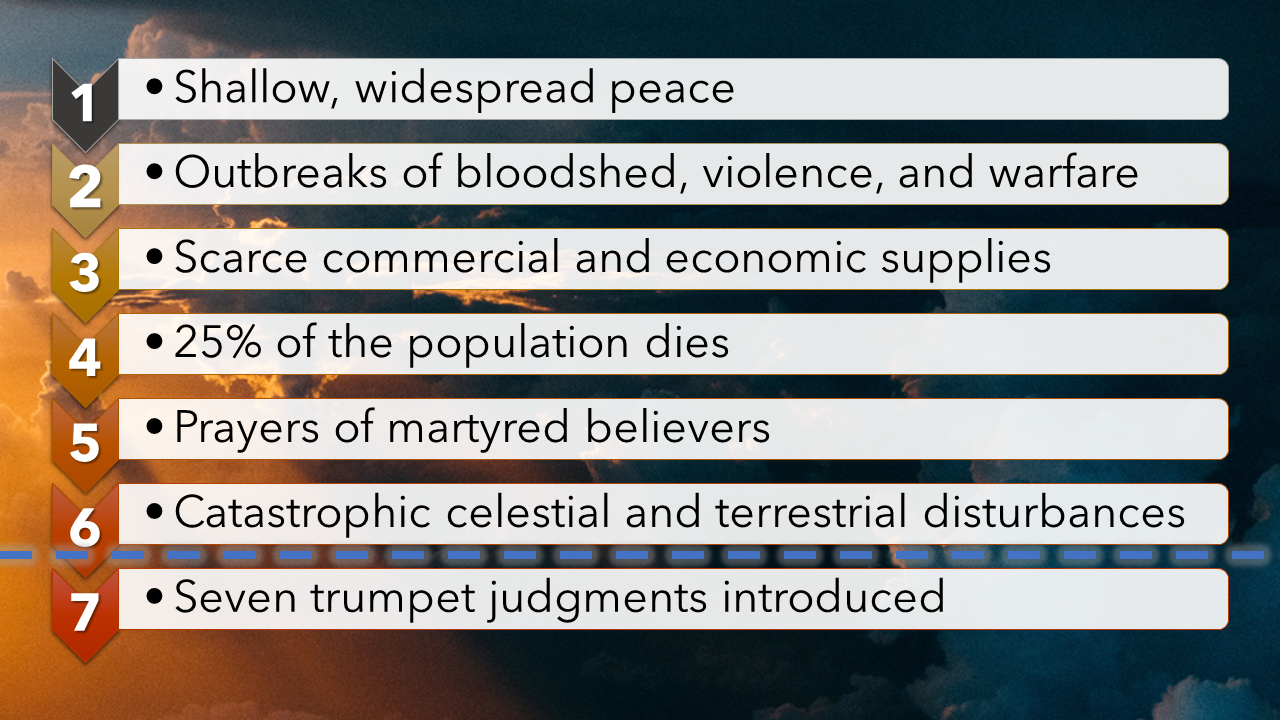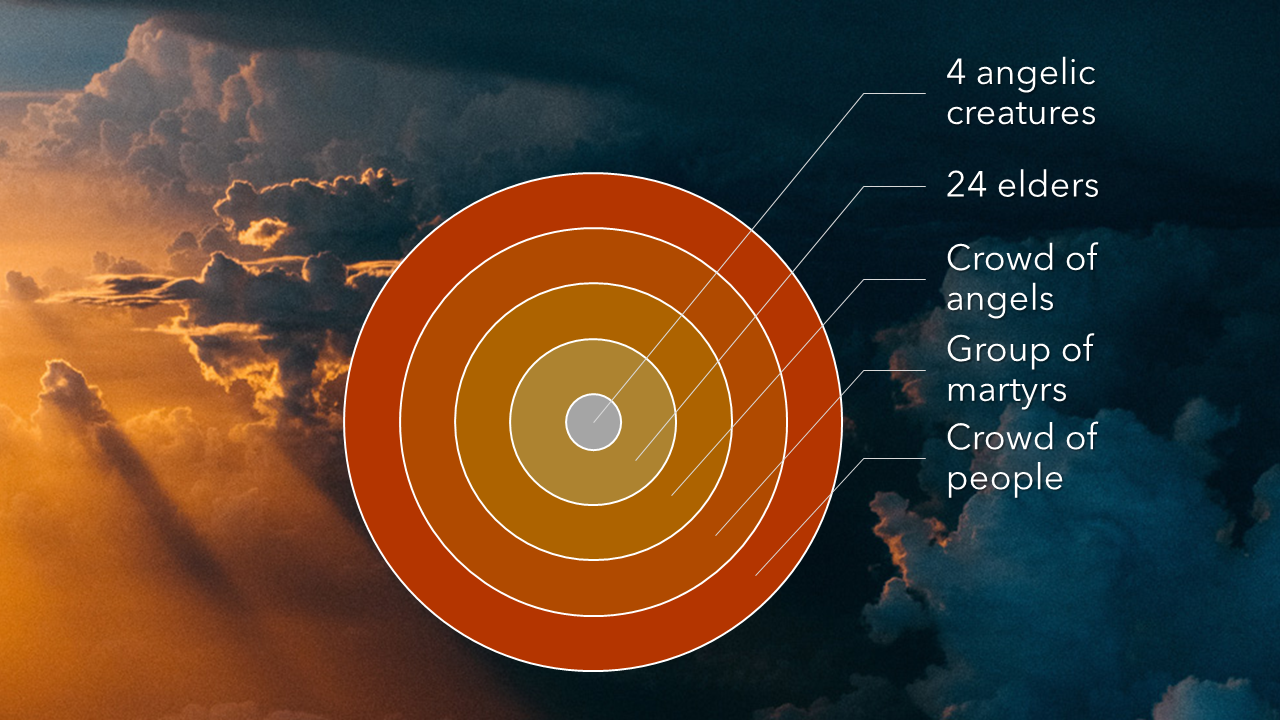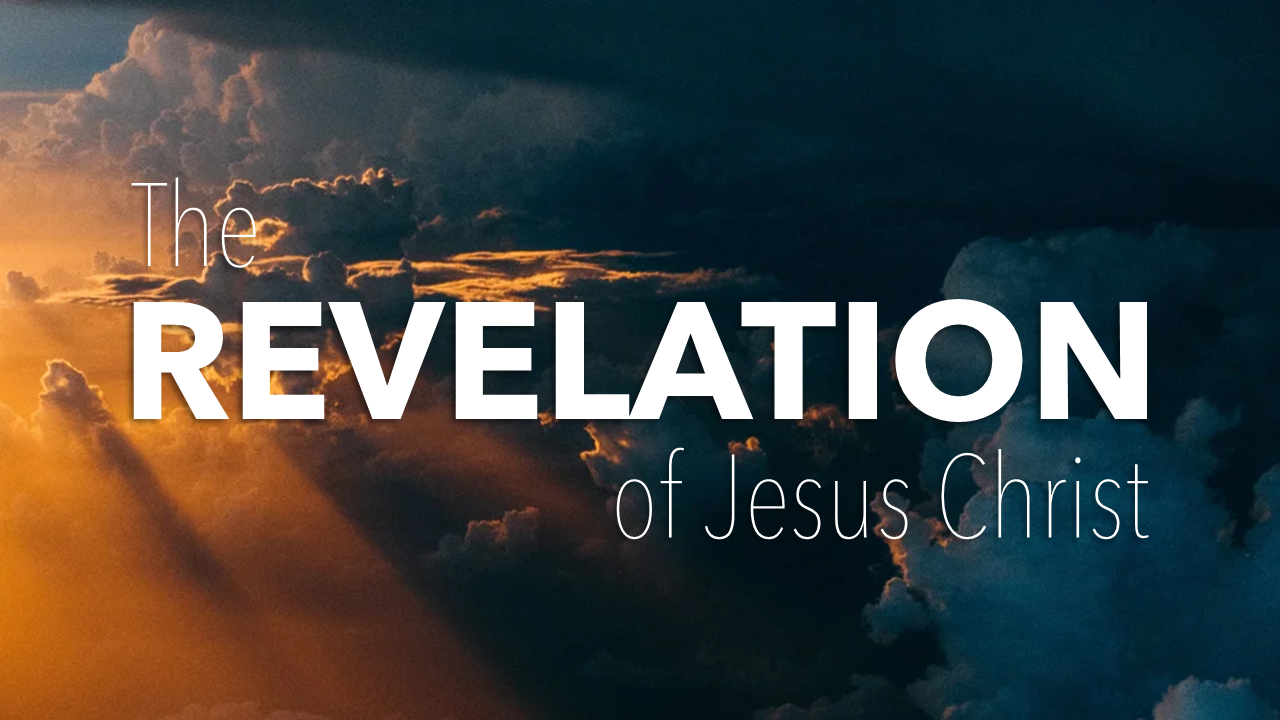Believers in the Tribulation
Revelation 7:1-17
What about the people of God?
Thematic music plays at the end of a movie as end credits scroll across the screen. While most of us don’t read more than the first few names, if even that, we probably wonder why so many names get mentioned. The better question, though, is probably why so few names onto the list. In reality, more people contribute to a movie nowadays than appear in the end credits. This is due to the limitations of end credit timeframes set by industry standards. If all possible names were included, the credits would scroll for far too long.
To most, this observation seems irrelevant since we don’t read the credits anyway, but it feels relevant to everyone who worked on the film. An artist named Jeremy Vanneman, for instance, has contributed to over 30 feature films and has also managed teams of artists as large as 25 persons. Yet he’s only been named in closing credits for three films (and his name was misspelled in one of them). To someone like Jeremy, a movie seems incomplete when his name isn’t mentioned because he was a part of the story, too.
In Rev 6-18, we learn what will happen during the Tribulation, a future 7-yr. period in which Christ will draw the nation of Israel to faith in him and judge the people of the world for their rebellion. We read a lot about God the Father and God the Son, who are the central figures in this story. We also read a lot about angels, wicked people, the antichrist, and Satan, as well as all sorts of harrowing events that will transpire. But if you’re like me, you’re asking the question, “What about the people who are following God?”
John gives an explanatory intermission.
Rev 7 functions as a kind of “intermission” that helps answer this question. This chapter gives a more in-depth perspective of what happens to the people of God during this traumatic time. Though John gives substantial attention to Christ’s judgment on the world through angelic activity and traumatic events, he doesn’t fail to mention the people of God and the role they play in this climactic stage of God’s plan for the world and mankind.

Following this intermission, John resumes in Rev 8 his description of the seven seal judgments, telling us what will happen when Christ opens the seventh seal. But first, let’s take a closer look at what happens to the people of God. The first half of the chapter tells us what happens to a group of Israelites who serve God during this time (Rev 7:1-8), while the second half tells us what happens to all the other believers (Rev 7:9-17).
Here’s what we already know.
We know that Christ will keep church-age believers out of this period of worldwide testing (Rev 3:10). This guarantee likely alludes to the rapture in which Christ will remove us from the world before the Tribulation begins.
We also know that early in the Tribulation (before the events of the sixth seal occur), some will believe on Christ and be killed for their allegiance to him (Rev 6:9-10). When they urge God to avenge their deaths, they will be told to wait until more people are added to their number in the later stages of the Tribulation (Rev 6:11).
Rev 7 tells us more about the experiences of God’s people which come after this initial group that will believe and be martyred before the rest.
God will seal 144,000 Jewish believers (Rev 7:1-8).
The previous chapter closes with rebellious nonbelievers asking, “Who is able to stand?” during this climactic expression of the Lamb’s wrath on the world (Rev 6:17). While the majority of Earth’s population will be in a precarious position during that time, Rev 7:1-8 assures us that God will preserve a special group of his followers from harm.
This group will be “sealed” by what seems to be an angelic or spiritual seal, not a physical one. This special seal will set them apart and preserve them for a special purpose.
As we study this special group of people, let’s be clear from the outset – these are not an elite group of highly successful Jehovah’s Witnesses, neither are they some mysterious society of ancient Jews who are hiding out in the mountains waiting to make their appearance at the end of time.
The Identity of this Group
John saw and heard a crucial interaction between five angelic beings. God had authorized four of these angels to bring about further harm and injury to the natural world, especially through the destructive force of wind on the land, water, and trees of the world (Rev 7:1).
Before this destruction occurs, God sent a fifth angel to perform an important act. This angel placed a seal on 144,000 people (Rev 7:2-4). These will be people who are “servants of God” (Rev 7:3) and from the “tribes of the children of Israel” (Rev 7:4).
We learn more about these special people in Rev 14:1-5. From these verses, we learn that: (1) they will be people (esp. men) of high moral integrity, possibly unmarried (Rev 14:4); (2) they will follow Christ persistently from the beginning to end of the Tribulation (Rev 14:4); and (3) they will be known for speaking the truth (Rev 14:5).
The Purpose of this Group
Altogether, these details indicate that God will set apart this group of believers for a special ministry of endurance and witness for him throughout the Tribulation. They will persist in serving him regardless of the circumstances and persecution they experience. John Phillips describes says this about the 144,000:
No other age has produced a company like this, a veritable army of militant believers marching unscathed through every form of danger. It has been theirs to defy the dragon, to bait the Beast, and to give the lie to the false prophet. Their calling has been to preach the gospel from the housetops when even to name the name of Christ called for the most dreadful penalties. They have been surrounded, these latter-day Jobs, with impenetrable hedges, able to laugh to scorn all the grand inquisitors of hell. They have walked the streets in broad daylight, careless of the teeth-gnashing rage of their would-be torturers and assassins, true witnesses of Jehovah in the most terrible era of the history of mankind. The devil knows about this coming band of conquerors, and writhes already in an agony of anticipation.[1]
In summary, these 144,000 Jewish believers will suffer greatly, they will persevere to the end of the Tribulation thanks to God’s seal upon their lives. They will remain standing until Christ returns to the Earth at Jerusalem and they will meet him there (Rev 14:1-5).
The Significance of Twelve Tribes
For clarity, we should identify these 144,000 believers as ethnic Israelites who’ve believed on Christ as Messiah, and we should distinguish them from the church. We know that this special group represents neither the church nor Tribulation believers in general because John describes them as being “from all the tribes of the children of Israel” (Rev 7:5). To emphasize this exclusive identity, John lists out the twelve tribes of Israel one at a time.
Some wonder how it will be possible to know which Jewish believers descended from which tribes since history has obscured a vast degree of Jewish ancestry lines. Though people may not know the details of their ancestral roots, God still knows and will have no trouble at all identifying which Jewish believers descended from which tribes.
Some wonder whether the numbers 144,000 in total and 12,000 per tribe will be the actual count. While we have no reason to believe otherwise, it would not be unreasonable to interpret these numbers as close approximate counts as well. Either way, these equal, round numbers indicate that God will show no favoritism to any of the tribes.
Some wonder about the order and selection of the names on this list. This curiosity stems from how this list differs from other lists of the twelve tribes in Scripture. In fact, Scripture provides 21 lists of the twelve tribes and each list differs from the others in some way, whether in the names that are included or the order the names are given.[2]
For a spreadsheet that lays out the differences between all of these lists side-by-side, click here. This variety occurs for various reasons:
- Sometimes the sequence of the list describes: (1) birth order, (2) order of blessings being given, (3) the arrangement of tribes around the tabernacle, (4) the order on a census report, (5) the order of real estate inheritances being given, or (6) the placement of gates on the walls of the millennial city of Jerusalem.
- Other times the list includes Jacob’s twelve sons, while other times it omits some. For instance, sometimes a list excludes Levi (since he received no land in Canaan) but replace Joseph with his two sons, Ephraim and Manasseh, equaling twelve. Other times thirteen names are given (including both of Joseph’s sons and Levi), while other times names are missing (such as Dan 2x, Issachar, Simeon, and Zebulun).
This list by John contains several unique features of its own.
- It places Judah in the initial position, probably due to the prominence of Christ himself being the central figure of this book (Rev 1:1) and the “Lion of the tribe of Judah” (Rev 5:5).
- It excludes Dan (as he also is in 1 Chron 2),
- It includes Levi (reflecting the original twelve sons of Jacob rather than territorial inheritance)
- Joseph replaces his younger son Ephraim while his older son Manasseh remains
Apart from the priority of Judah, these details in John’s list of the twelve tribes are difficult to interpret with any clear significance. How can we know why Levi appears or why Joseph replaces his younger son? How can we explain why Dan doesn’t appear, even though he does appear in Ezekiel’s prophecy of the millennial kingdom?
Questions like these remind us to be careful when studying the Bible. We may suggest possible reasons for details like these, but we cannot be dogmatic.
What’s most important in this case, for instance, is not why the names appear in the order they do or why certain names appear while others do not, but that John sees that God will treat all the tribes of Israel equally. Even though he mentions Judah first for what seems to be an obvious reason, he seals them all in equal proportions. This demonstrates God’s faithfulness and grace to his chosen people Israel throughout all generations, just as he promised to Abraham, Isaac, and Jacob millennia before.
Many other people will believe on Christ as well (Rev 7:9-17).
Having given attention to this special group of 144,000 Jewish believers who will be given a special calling by God, John saw a second group of people next.
This group differs from the 144,000 in multiple ways.
Though this group also consists of people who had believed on Christ for salvation (Rev 7:9), they differ from the 144,000 in some noticeable ways:
- The first group tallied 144,000, but this group is a massive, uncountable multitude (Rev 7:9).
- The first group appeared on Earth, but this group appears in God’s throne room of heaven (Rev 7:9).
- The first group consisted of Jewish believers, but this group consists of people from all national and ethnic backgrounds (Rev 7:9).
- John did not describe the first group’s actions, but he describes this group as joining the angelic crowd, the twenty-four elders, and the four angelic creatures in praising and worshiping the Father and the Lamb at the throne (Rev 7:10-12).
- John knew the identity of the first group, but he was unsure about the identity of the second group until he asked for more information (Rev 7:13-14).
This group came out from the Tribulation.
One of the elders from the angelic council around God’s throne identified this massive crowd of people (Rev 7:14-15). These are people from all ethnic backgrounds (presumably even Jews who hadn’t been sealed) who had lived on Earth during the Tribulation (“the great tribulation”) but had “come out” from it into God’s presence (Rev 7:14), but how did they come out?
Since John treats this group distinctly and subsequently to the tribulation martyrs mentioned when Christ opened the fifth seal, it seems most likely that these were people who had believed the gospel, possibly after responding to the witness of the 144,000. Sometime after they believed, then, they died either from martyrdom as well or as a result of the catastrophic natural forces which were unleashed when Christ opened the sixth seal. This latter possibility seems most likely since John does not describe them as martyrs, as he did the previous group (Rev 6:9-11).
This group joins the growing crowd of worshipers at God’s throne.
The elder speaking with John does more than identify this massive group of believers who came out of the Tribulation. He also describes their future condition. Though they had experienced terrible things on Earth, they now enjoyed the privilege of serving God through worship in his heavenly temple and throne room. If you haven’t noticed already, this group of worshippers continues to grow throughout Revelation.
- John worshiped God in the Spirit alone on Patmos as a banished citizen (Rev 1).
- Four angelic creatures worship at the throne.
- Twenty-four angelic council-members worship around the throne.
- An innumerable number of angels worship around the throne.
- A smaller group of martyred believers worship at the throne.
- Now an uncountable multitude of deceased believers worships around the throne.

This group receives assurance of eternal rest.
This heavenly worship scene – though impressive – will not continue forever. Though they now have come into the presence of God, God himself will eventually come into their presence on Earth where they will eventually dwell once again forever (Rev 7:15; cf. Rev 21:3). In that future, blessed position, these believers – like all others:
- will never go hungry or become thirsty again (cf. Isa 49:10)
- will never experience extreme weather conditions again (Rev 7:16; cf. Isa 49:10)
- will never experience pain, regret, or sorrow again (Rev 7:17; cf. Isa 25:8; Rev 21:4)
These things will happen because (and catch the beautiful play on words here), the Lamb with be their Shepherd and he will care for and defend them (cf. Psa 23). On that day, the whole earth will be his pasture and no enemies will be able to get inside – not even Satan.
Furthermore, as their Shepherd, Christ will lead them to “the springs of the waters of life” (emphasis on life). Just as a shepherd leads his sheep on a difficult journey through valleys and shadows, across rocky cliffs, and past savage enemies to the cool refreshing streams at the crest of the mountain, so Christ will lead us to the true and ultimate refreshment of everlasting life (Rev 22:1, 17). This new and endless life will far surpass whatever suffering these people may have endured on Earth during the Tribulation.
Key Takeaways
I’m sure we can draw many personal, spiritual lessons from this chapter even though it doesn’t speak about us or our world situation directly. Here are just a few key takeaways to consider.
God is faithful to Israel.
God first approached Abraham and promised him a nation from his offspring approx. two millennia before Christ entered the world as our Savior (Gen 12:2-3). From then until the Tribulation, this nation will have endured many trials and been scattered around the world for many reasons. Though many have attempted to bring an end to Israel, they still remain and will be definitively restored in the Tribulation and millennial kingdom. In fact, they’ll not only be restored but will serve God more effectively and faithfully than ever.
Gospel outreach will thrive in the Tribulation.
Though the church will be removed, the nation of Israel will believe on their Messiah and step forward as a courageous witness for Christ. Though 144,000 will be sealed and protected for this special mission, others will die either as martyrs or as victims of natural (even catastrophic) causes. Whatever the case, a countless multitude of people from all ethnic backgrounds will believe on Christ for salvation as a result and appear in the throne room of God to worship, where they will also be promised an everlasting rest and a place in the new world that God will make.
The Lamb is the source of all eternal blessings.
This chapter – like every other chapter in Revelation – is not ultimately about angels, the 144,000, the uncountable multitude, or the future eternal state. It’s about the Lamb and his faithfulness to all who believe on him, whether Jew or otherwise. Though the Jewish nation rejected and crucified him, he still forged a way through his death to redeem them as a nation and to mobilize them as messengers of his salvation to the world.
- He is God (Rev 7:10-12, 15).
- They will stand before him at the throne (Rev 7:9).
- He is the one who brings salvation (Rev 7:10).
- He deserves wholehearted praise and worship (Rev 7:12).
- His blood cleanses us from all our unrighteousness (Rev 7:14).
- He deserves ceaseless service (Rev 7:15).
- He preserves and cares for his people forever (Rev 7:16-17)
A chapter like this reminds us that though we, like John in Rev 1, may suffer difficult things on this Earth, the Lamb has far better things in store for the future if we will endure, overcome, and persevere to the end with faith in him. Let’s keep our eyes on the Lamb and let him lead us to the fountain of living waters.
[1] John Phillips, Exploring Revelation, rev. ed. (Chicago: Moody, 1987), 179-80.
[2] Gen 29, 35, 45, 46; Exo 1; Num 1, 2, 7, 10, 13, 26, 34; Deut 27, 33; Josh 13-19; 1 Chron 2, 2-8, 12; Ezek 48 (2x); Rev 7.

